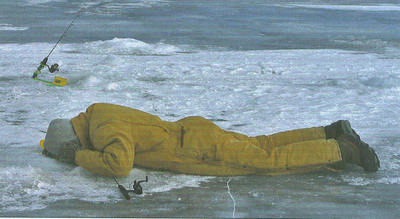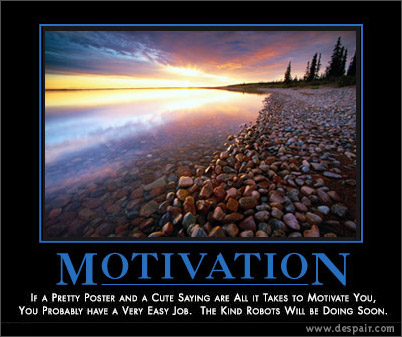I’ve made passing mention here a couple of times that I used to be a scoreboard operator at the Metrodome, working games for the Twins, Vikings and Gophers as well as working the odd (some odder than others) concert, tractor-pull or pro-wrasslin’ match. I only mentioned it before to add context to whatever else I was writing about at the time, figuring some time I’d get around to dedicating a post to the experience and offering a glimpse of what goes on behind the scenes at major sporting events. I don’t know that there’s ever a perfect time to write something like that, but an e-mailer did ask for more Dome details the other day, so here goes.
Back in early 1982 I was an over-extended single guy looking for a part-time job to supplement my income, but I didn’t want to work at McDonald’s or someplace where someone I knew might see me. Perusing the want ads one day I saw an ad that went something like this: “Part-time opportunity, evenings and week-ends. Must be knowledgeable about football and baseball, able to type 50+ wpm and not afraid to perform in front of large crowds. For more info contact…” There was no mention of what the job was, and I almost dismissed it. The more I thought about it, though, I realized that there wasn’t anything in the ad that didn’t apply to me…even the large crowds thing. I applied, was interviewed, given a typing test and, obviously, hired.
There were 8 scoreboard operators plus Dick Davis from the Metropolitan Sports Commission who was in charge of the scoreboard and us. We were divided into two four-person teams and I was the only person who wasn’t a school teacher; six of the others, in fact, where coaches or had experience coaching as well. The system was all computer operated (though our first computers were very large and almost primitive) and there was a minor stink in the Strib before the season started because the new computerized system meant replacing the old groundskeepers from the Met who had been hanging the signs for the old board. Whatever.
The two crews alternated games, and within the crews we rotated through the four scoreboard positions on a game-by-game basis. Originally the job required someone to register balls, strikes, runs and the line score; someone to type in and display advertising and other messages during the course of the game; someone to keep track of and update out of town games; and someone to operate the sole video camera, perched on the second-deck fascia above third base. Unless the game was televised (and a lot of Twins games then weren’t) this was the stadium’s replay camera, beaming images to the black and white (black and yellow, actually) board, to be displayed through thousands of lightbulbs (“fuzz-dots” we called ’em). Resolution wasn’t very good, but you could see things well enough to recognize yourself if a crowd shot was put on the board.
The first balls & strikes console was a twitchy piece of dreck that didn’t have all the bugs worked out. Often you’d push the button for a ball or strike and it would delay the display long enough that you’d think it hadn’t registered the input, so you’d push again – only to see double strikes or balls suddenly go up. Push the button too hard to ensure it was registered and the same thing could happen. This was very frustrating to the operators and to the people in the press box, who were always looking for something to criticize.
Sid Hartman, the grand old man of Minnesota sportswriting, was especially incensed by this type of malfunction. The press box was immediately outside the door of our room and any time a “double-clutch” occurred he’d jump up and storm in to announce that the count was wrong, as if we didn’t know it. I was working the out-of-town board one evening when Sid made about six trips into our “office”. When another glitch occurred he was on his way in again. I happened to be standing by the door, however, so I innocently turned my back to it as if to look over the shoulder of the guy working the message board, while casually flipping the door lock into place. There was much door rattling and cursing; muffled as it was by our air-conditioned booth, but I think I did hear mentions of my parentage and my own capability to ever father children, but he finally went away and didn’t come back the rest of the game.
That was actually kind of a fun memory. One of my worst moments, however, came before a game against the Blue Jays. Tony Kubek had recently been demoted from the “Game of the Week” and was working the back-up GOTW. He was also the main broadcaster for the Jays, which I didn’t know at the time. Anyway, I’m walking through the press box and here comes Tony Kubek! I say, with some amazement, “Hey, Tony Kubek!” He smiles. I then blurt, “Are we the back-up game today?” I wasn’t trying to bust his chops; I was just surprised that the Twins of that era might be considered for a national broadcast (even if as a back-up). Mr. Kubek was not pleased. Dick Davis, however, witnessed the scene and thought it was one of the funniest things he’d ever seen and would never let me forget it, especially any time Kubek returned to the Dome.
There were other hero-sightings as well. In the early days we actually had to go down to the locker rooms to get the lineups, which were posted on a corkboard in the home and visitor clubhouses. I remember that Reggie Jackson, in boxers, tank-top and beat-up flip-flops, looked really old and that his calves seemed impossibly skinny. Ted Simmons wearing nothing but a jock is not a sight I’d wish on anyone. Another time I was writing down the visiting lineup, my piece of paper pressed against the wall under the corkboard. I finished and turned around to leave – and almost hit Sparky Anderson in the nose with my elbow. He’d walked up behind me and was eating a bowl of vegetable soup and watching me write down the lineup, or was perhaps just pondering making a change, and I’d never heard him approach. At least he laughed about it.
Another time I got the hairy eyeball from Don Drysdale when the White Sox were in town. He was standing in the back of the press box eating a hot dog when I came out of the scoreboard room about 20 feet from him. All of a sudden a fan in the row in front of the press box reached over the divider and grabbed my shoulder, shoved a baseball at me and said, “Hey, buddy – get Drysdale’s autograph for me.” It happened so quickly that I just obeyed, somewhat stupefied. I approached DD with the ball (he was close enough to hear what was going on) and he glared at me but took the ball and signed it (later I’d hear from others what a tough autograph he was). I barely got a “thanks” from the guy who gave me the ball. I should have kept it.
In addition to working World Series and ALCS games and an All Star game I also had the privilege of working Scott Erickson’s no-hitter and I got paid to see Dave Winfield’s and Eddie Murray’s 3,000th hits. I was also there the night Dave Kingman hit a monstrous foul ball straight up that never came down. The ball went into one of the holes stitched into the underlining of the Dome roof and disappeared. The funniest thing was all the Twins infielders (including shortstop Houston Jiminez – all 5′ 3″ inches of him) gathered in the middle of the infield, looking up at the roof in the hopes of fielding the pop-up. As the seconds went by, though, they started to get really nervous. All of a sudden they all simultaneously ducked and scattered in different directions expecting to be struck by the phantom ball that was never there. The next day someone in the Twins front office got the bright idea that before the first pitch of the game they’d have someone drop a ball from the ceiling and Mickey Hatcher would catch it and the umpire would call “Out”. Someone got up on the catwalk, Mickey and the ump positioned themselves near home plate, and the ball was dropped – by the guy above and by the guy with the glove.
One of my all-time favorite memories, however, came when I was working the camera back in the fuzz-dot days and doing crowd shots between innings. As I panned over a boy that was about 10 years old he saw he was on the board and then thought it would be funny to flip me off. Dick was in my headset saying, “Get off him! Get off him!” but I said, “No, just stick with me here” and I zoomed in on the kid, who immediately got very shy and embarrassed. He walked over a few seats and sat down low, trying to get out of sight. He looked up at the board and saw he was still up there. He slunk down even further and moved over several more seats, and I again followed him. By this time the crowd was laughing so the kid got up and ran up the stairs to the concourse. About that time the inning was beginning and Dick said, “OK, back to the game” but I suggested he take the camera shot off the board but to stay with me. He agreed and sure enough, a few minutes later the kid stuck his head back in from the concourse and looked to see if the coast was clear. Seeing the line score on the board he stepped back into the aisle. “Now!” I said and Dick immediately put the camera shot back on the board — the crowd roared, the players on the field (I was told) started turning around trying to figure out what was going on, and the kid high-tailed it back out to the concourse and has probably never gone to a ballgame since.
The camera also helped me get published in Sports Illustrated! Back in the day when Bob Uecker was doing his “I must be in the front rooow” commercials for Miller Lite, the Brewers came to the Dome for a series. Ueck’s commercials, if you recall, ended with him way out by himself in center field, hollering to the nearest guy, “Great seats, eh, buddy?” As the game went on I saw some guy sitting in the upper deck, center field, all by himself. I zoomed in on him (showing plenty of empty seats) and asked Dick through the headset, “Is that Bob Uecker?” He thought that was pretty funny so he told the guy working the message board to create a 1/3 board message with the words “Is that Bob Uecker?” to go alongside my camera shot. A couple of weeks later SI came out with a story about Ueck and the article started off by referring to my caption and camera shot from the Dome.
Well, those are some of the baseball memories. There’s more I could write about some of the amazing things I did and saw at football games, tractor-pulls and the Pink Floyd and Rolling Stones concerts, but I’ll save those for another time.













